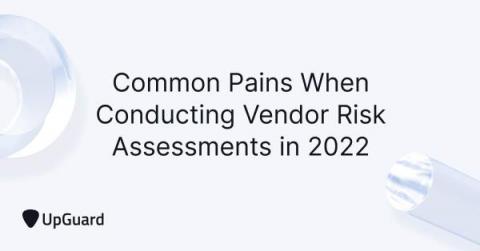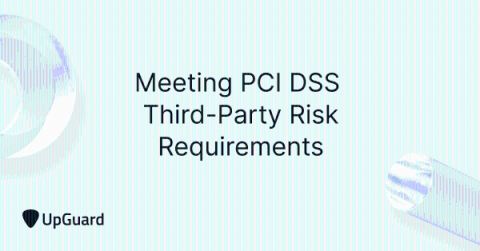Security | Threat Detection | Cyberattacks | DevSecOps | Compliance
Risk Management
How to Achieve Network Infrastructure Modernization
How Your Cybersecurity Score Impacts Your Stock Price
Top 3 Vendor Risk Assessment Frustrations - Can You Relate?
The vendor risk management process is now an essential requirement of all cybersecurity programs. Without it, you're a sitting duck for supply chain attacks and third-party data breaches. In recognition of this, regulatory bodies are increasing their third-party risk compliance requirements and enforcing obedience by threatening heavy financial penalties for non-compliance.
How to Create a Compliance Risk Assessment Template
What is Cybersecurity Architecture and Why is it Important?
Meeting PCI DSS Third-Party Risk Requirements
Organizations must enact effective third-party risk management (TPRM) programs to ensure their vendors fulfill cybersecurity requirements. Otherwise, they risk carrying the financial and reputational harm caused by customer data breaches. The PCI DSS standard covers aspects of third-party risk management as it's applicable to all organizations that process credit card data, especially the heavily regulated finance industry.
Incredibly simple...yet effective. Zhadnost botnet relies on Open Proxies and DNS Resolvers.
As mentioned in SecurityScorecard’s (SSC) previous Zhadnost blog posts (part one and part two), the DDoS attacks against Ukrainian and Finnish websites do not appear to have a lasting impact, as the sites were back online within hours of the attack.
The Caller is Coming from Inside the House!
SecurityScorecard’s own Ondrej Krehel talks with News 12 in New York about how to protect yourself from what might be the most surreal spam number of all—your own. Most of us are used to getting spam texts: You’ve paid your bill, click this link for a free gift! You’ve won the sweepstakes, click here to redeem! It’s no surprise that nothing good comes from clicking those links.








